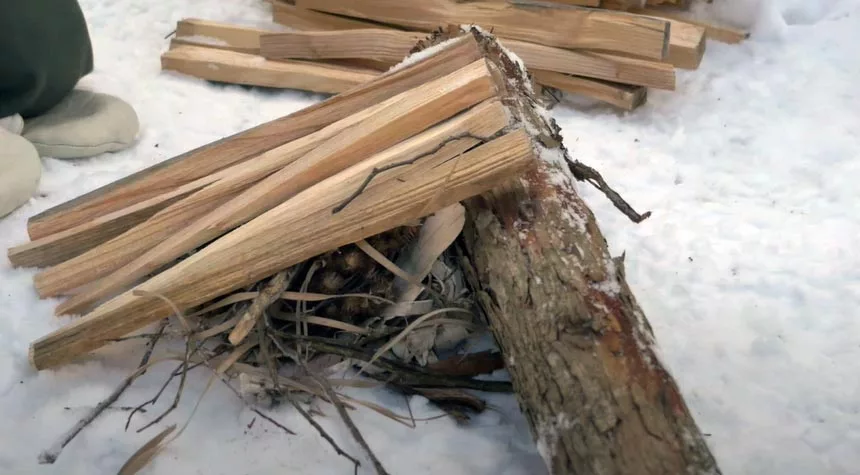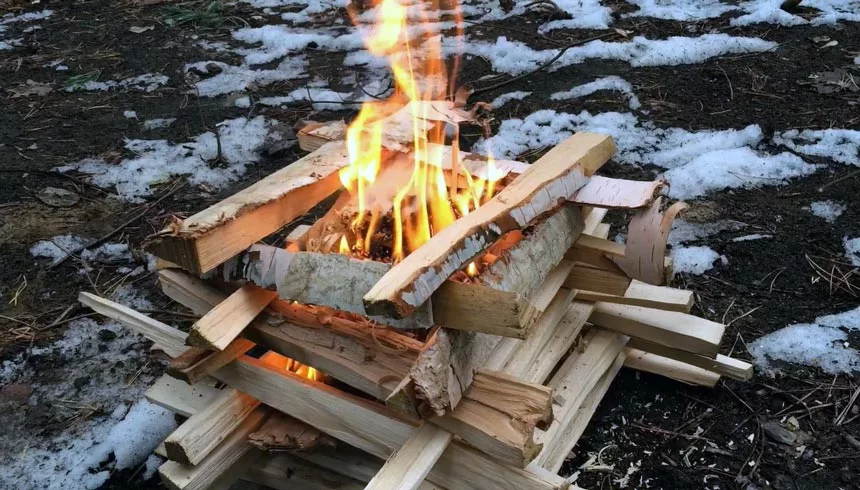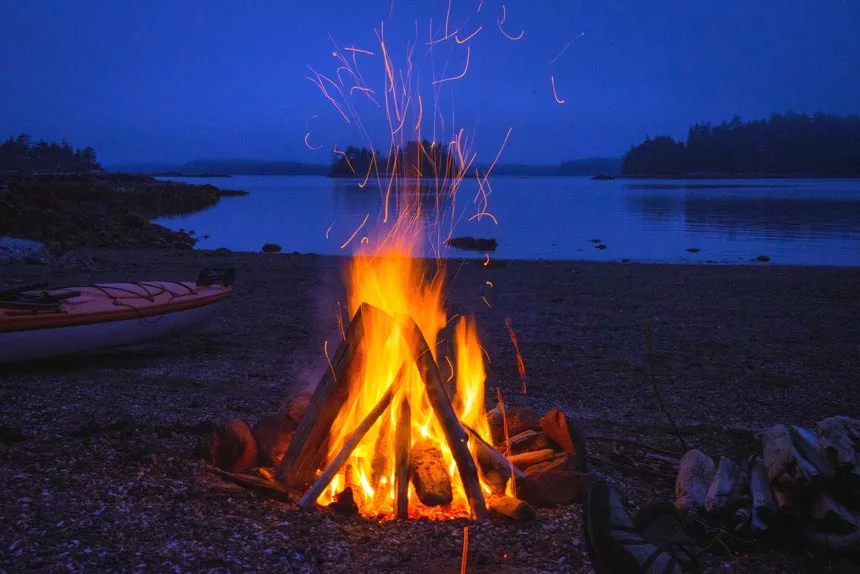Camping in the woods or beneath the stars in the open green is an exciting feeling to crave for. It gets even more thrilling when you can enjoy the view with a campfire. But you must know how to start a campfire properly to avoid any unwanted mishaps.
While campfires are an excellent way to brighten and liven up an atmosphere, they can also turn things into a disaster. It will take only a couple of seconds to set everything on fire.
Before you can even summarize the entire situation, you will be lying on the ground feeling the intense heat searing through your camp from the inside out.
That being said, it’s critical to understand the proper way to build a campfire. This article goes through the complete process of setting up a campfire and what precautions should be followed. We believe this guideline could be a great help, especially for those new to camping.
So, without further ado, let’s get started.
Table of Contents
How to Build a Campfire Step-by-Step Procedure
Building a campfire is nothing too hard if you have suitable flammable material and guidelines. So, here are our most basic instructions on how to start a campfire that might help you understand the entire process more efficiently.
1. First Identify Steps in Building a Campfire
Gathering all the essential tools, piling them on the ground, and lighting fire on them isn’t the right way to make long-lasting fires. Everything must run on a system, and so do the campfire. You will need to identify steps in building a campfire before jumping into the execution.
The ingredients and process for building a campfire will differ depending on the type of campfire you are planning on.
First, Lookout for a suitable location for setting up the campfire. After that, list the types of materials you’ll need to get started. Finally, start making the campfire structure and light it up.
As you finally finish with all these arrangements, you are good to go with lighting up your campfire.
2. Find the Perfect Campfire Spot
It’s better to settle in a place with no flammable objects nearby. In other words, you should set your campfire in an open space, keeping a little distance from the camping tents. Also, ensure that the ground is level to prevent fire from spreading out.
Setting a campfire under the trees or any other areas nearby localities imposes vast risks. Although with proper safety measures, you can also build a small campfire in those places. However, it’s better not to do so.
3. Gather Your Campfire Tools
There are a few materials to use in building campfires. Here’s everything you will need to gather,
Tinder Bundle:
A tinder bundle makes the most convenient, accessible, and smallest burning material. It comes in many forms and is primarily a dry material that helps create a long-lasting campfire. Some common types of tinders are listed below,
- Wood shavings
- Wadded paper
- Strips of cardboard
- Commercial fire sticks or campfire starters
- Dryer lint
- Wax
N.B: You can also use some cotton balls if there are not enough tinders to light up your campfire.
Kindling:
Twigs, tiny and low-hanging branches, are commonly used as pieces of kindling. The majority of these are 1/8 inch and 1/2 inch in diameter. Because these kindlings are made primarily of drier wood, they are ideal for blazing fires.
Firewood:
Firewood is a must-have to start a campfire. These shorter pieces of fuel wood come in various sizes, from 1 to 5 inches in diameter. You can either take up a whole log or split the larger pieces of branches into parts to make a complete pile of firewood.
However, keep in mind that damp wood makes starting and maintaining a campfire more challenging. So, you must gather a bunch of dry wood and avoid those in wet conditions. You must also be careful not to break any of the trees’ branches. This is considered malpractice that can lead a forest’s existence at stake.
It’s better if you can talk to the forest management of the place you have planned your stay in. They will give you a campfire permit and even the resources to gather firewoods.
Matches or a lighter:
Waterproof matches or gaslighters will best light up a campfire. Recently these two tools are in popularity. Howbeit, you can also use standard stick matches if that gives you the most comfort.
4. Make a Firepit
After gathering around the campfire materials, it’s time to make a firepit. The firepit absorbs the extreme heat produced by the fireballs, reducing the chance of fire spreading. Therefore, building a perfect fire pit is crucial to starting a campfire.
You’ll need to dig a few inches into the ground to make a fire pit. Then, along the pit’s edges, place some rocks to create a fire-resistant barrier. It will help insulate the fire from the outer substances and stay lit for hours.
Also, make sure to remove all dead grass and loose dirt from at least 8 to 10 feet around the perimeter of the ground to prevent the campfire from going out.
5. Work on Building the Campfire
In order to have the perfect campfire experience, you need to build a great fire structure. Here are some tips on how to do just that.
Start with a good foundation. Use large logs or rocks to create a base for your fire. This will assist keep the heat in your fire and allow it to burn more evenly.
Create a teepee. After you’ve laid your foundation, you may begin constructing your teepee. Begin by creating a circle pattern with smaller logs or sticks around your base.
Then, lean them inward until they meet at the top, creating a cone-like shape. Leave an opening at the top of your teepee so air can circulate and help the fire breathe.
Add kindling. Now it’s time to add some kindling – small twigs or dry leaves – to your campfire. It will keep the fire lightened for hours and let you enjoy a wonderful campfire experience.
6. Light the Fire
As you are done building your campfire, it’s time you finally light up the campfire. Lighting the bed of tinder from several sides will give you the best result.
Avoid adding additional fuel or gasoline to the campfire; it might cause the flames to travel up the stream. You should also avoid using any green wood as they are of no use in keeping the campfire lit.
You can keep a handful of tinder nearby to feed the campfire from time to time. However, be careful not to increase the flame burning rate too high.
Different Types of Campfires
You may make various sorts of campfires to suit your needs. Below we have compiled a list of the most common types
1. The Teepee Fire
This design is ideal for cooking. First, make a teepee using your kindling and tinder. Then, on top of the kindling, make a larger firewood teepee. Once lit, the flames will ascend through the kindling and into the larger wood.
2. The Lean-to Fire

This is also great for cooking. Stick a long piece of kindling into the ground at a 30-degree angle. Then take some smaller pieces of kindling and arrange them around the tinder like a tent form. When the kindling catches fire, add more firewood and kindling into the pit.
3. The CrossFire
This is an excellent choice for a long-lasting fire. Start by crisscrossing your kindling across the tinder layer, then add your logs or firewood.
4. The Log Cabin Fire

Create a tinder teepee using kindling, then place two logs on either cone side. To make a square, stack two more logs on top of them. Then, as you get closer to forming a cabin, add smaller and shorter pieces of firewood. Fill the rest of the cabin with your lightest kindling.
Take Safety Measures
Keep fire extinguisher tools nearby. Prevent the kids from playing around the campfire. Keep them at a safe distance and tell them about the possible dangers that a campfire could cause if not maintained correctly.
Always be mindful of putting out the fire once everyone’s off the campground. Get a bucket of water and repeatedly sprinkle water over the campfire to put off the fire. Do not ever pour the whole bucket of water on the campfire at once. It can rather cause the fire to spread out.
Place the palms of the hands slightly above the wet ashes before you go. They may still be hot, so don’t touch them directly. If you feel the ashes are not too hot, it’s safe to leave the campfire then. However, if you still find it warm, pour a little more water and stay there for a couple of minutes as it cools down.
Key Takeaway
For people who don’t know how to build a campfire properly, it’s a thrilling but dangerous hobby. Lighting a campfire requires more than just a few larger pieces of wood, dead branches, and dry grass. You will need to improve your proficiency, practice, and dedication to the task.
We’ve tried to compile the best advice and suggestions on how to start a campfire effectively throughout this article. This is mainly intended for beginner-level campers, making the procedure much easier for them.
Learning how to build a campfire is not so tricky. You can quickly master this camping necessity with a few basic firing supplies, patience, and a lot of practice, especially when you’re just getting started.
So, it’s time you get yourself ready and give your best try to light the perfect long lasting campfire on your next camping trip.




